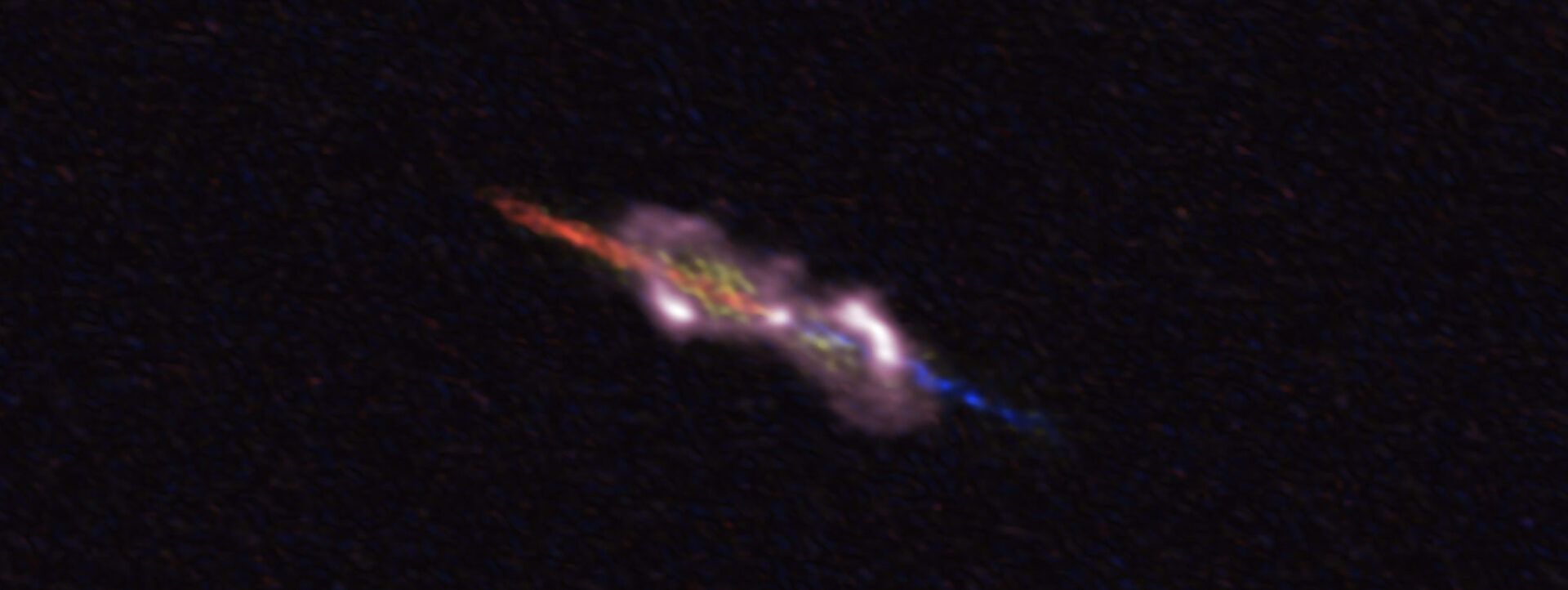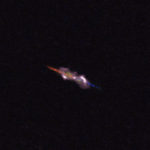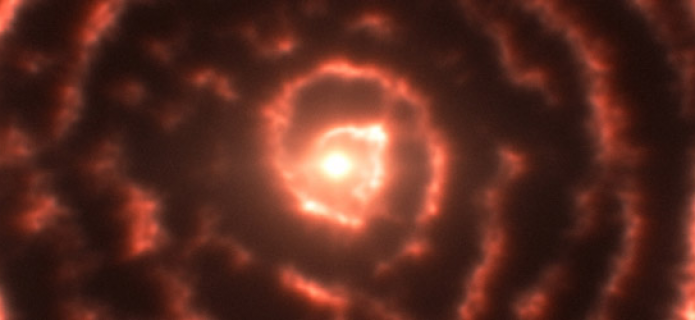Stars' secret embraces revealed by ALMA
Unlike our Sun, most stars live with a companion. Sometimes, two come so near that one engulfs the other - with far-reaching consequences. A team of astronomers that used ALMA to study 15 unusual stars was surprised to find that they all recently underwent this phase. The discovery promises new insight into the sky's most dramatic phenomena, life, death, and rebirth among the stars.
Using the gigantic telescope ALMA in Chile, a Chalmers-led team of scientists studied 15 unusual stars in our galaxy, the Milky Way, the closest 5000 light-years from Earth. Their measurements show that all the stars are double. All have recently experienced a rare phase that is poorly understood but probably leads to many other astronomical phenomena. Their results are published this week in the scientific journal Nature Astronomy.
By directing ALMA towards each star and measuring light from different molecules close to each star, the researchers hoped to find clues to their backstories. Nicknamed "water fountains," these stars were known to astronomers because of intense light from water molecules –produced by unusually dense and fast-moving gas.
Located 5000 m above sea level in Chile, the ALMA is sensitive to light with wavelengths around one millimeter, invisible to human eyes, but ideal for looking through the Milky Way's layers of dusty interstellar clouds towards dust-enshrouded stars.
"We were extra curious about these stars because they seem to be blowing out quantities of dust and gas into space, some in the form of jets with speeds up to 1.8 million kilometers per hour. We thought we might find out clues to how the jets were being created, but instead, we found much more than that", says Theo Khouri, first author of the new study.
The scientists used the telescope to measure signatures of carbon monoxide (CO) molecules in the light from the stars and compared signals from different atoms (isotopes) of carbon and oxygen. Unlike its sister molecule, carbon dioxide (CO2), carbon monoxide is relatively easy to discover in space and is a favorite tool for astronomers.
"Thanks to ALMA's exquisite sensitivity, we were able to detect the very faint signals from several different molecules in the gas ejected by these stars. When we looked closely at the data, we saw details that we weren't expecting to see", says Theo Khouri.
The observations confirmed that the stars were all blowing off their outer layers. But the proportions of the different oxygen atoms in the molecules indicated that the stars were in another respect not as extreme as they had seemed, explains team member Wouter Vlemmings, an astronomer at Chalmers.
"We realized that these stars started their lives with the same mass as the Sun or only a few times more. Now our measurements showed that they have ejected up to 50% of their total mass just in the last few hundred years. Something flamboyant must have happened to them", he says.
Why were such small stars come losing so much mass so quickly? The evidence all pointed to one explanation, the scientists concluded. These were all double stars, and they had all just been through a phase in which the two stars shared the same atmosphere, one star entirely embraced by the other.
"In this phase, the two stars orbit together in a sort of cocoon. This phase, we call it a "common envelope" phase, is really brief and only lasts a few hundred years. In astronomical terms, it's over in the blink of an eye", says team member Daniel Tafoya.
Most stars in binary systems simply orbit around a common center of mass. These stars, however, share the same atmosphere. It can be a life-changing experience for a star and may even lead to the stars merging completely.
Scientists believe that this sort of intimate episode can lead to some of the sky's most spectacular phenomena. Understanding how it happens could help answer some of the astronomers' most important questions about how stars live and die, Theo Khouri explains.
"What happens to cause a supernova explosion? How do black holes get close enough to collide? What's makes the beautiful and symmetric objects we call planetary nebulae? Astronomers have suspected for many years that common envelopes are part of the answers to questions like these. Now we have a new way of studying this momentous but mysterious phase", he says.
Understanding the typical envelope phase will also help scientists study what will happen in the very distant future, when the Sun too will become a more extensive, cooler star - a red giant - and engulf the innermost planets.
"Our research will help us understand how that might happen, but it gives me a more hopeful perspective. When these stars embrace, they send dust and gas out into space that can become the ingredients for coming generations of stars and planets, and with them the potential for new life", says Daniel Tafoya.
Since the 15 stars seem to be evolving on a human timescale, the team plans to keep monitoring them with ALMA and with other radio telescopes. With the future telescopes of the SKA Observatory, they hope to study how the stars form their jets and change their surroundings. They also hope to find more – if there are any.
"Actually, we think the known "water fountains" could be almost all the systems of their kind in the whole of our galaxy. If that's true, then these stars are the key to understanding the strangest, most wonderful, and most important process that two stars can experience in their lives together", concludes Theo Khouri.
Additional Information
The research is published in the paper “Observational identification of a sample of likely recent Common-Envelope Events” in Nature Astronomy, by Theo Khouri (Chalmers), Wouter H. T. Vlemmings (Chalmers), Daniel Tafoya (Chalmers), Andrés F. Pérez-Sánchez (Leiden University, Netherlands), Carmen Sánchez Contreras (Centro de Astrobiología (CSIC-INTA), Spain), José F. Gómez (Instituto de Astrofísica de Andalucía, CSIC, Spain), Hiroshi Imai (Kagoshima University, Japan) and Raghvendra Sahai (Jet Propulsion Laboratory, California Institute of Technology, USA).
The original Press Release was published by Chalmers University.
The Atacama Large Millimeter/submillimeter Array (ALMA), an international astronomy facility, is a partnership of the European Organisation for Astronomical Research in the Southern Hemisphere (ESO), the U.S. National Science Foundation (NSF) and the National Institutes of Natural Sciences (NINS) of Japan in cooperation with the Republic of Chile. ALMA is funded by ESO on behalf of its Member States, by NSF in cooperation with the National Research Council of Canada (NRC) and the Ministry of Science and Technology (MOST) and by NINS in cooperation with the Academia Sinica (AS) in Taiwan and the Korea Astronomy and Space Science Institute (KASI).
ALMA construction and operations are led by ESO on behalf of its Member States; by the National Radio Astronomy Observatory (NRAO), managed by Associated Universities, Inc. (AUI), on behalf of North America; and by the National Astronomical Observatory of Japan (NAOJ) on behalf of East Asia. The Joint ALMA Observatory (JAO) provides the unified leadership and management of the construction, commissioning and operation of ALMA.
Images
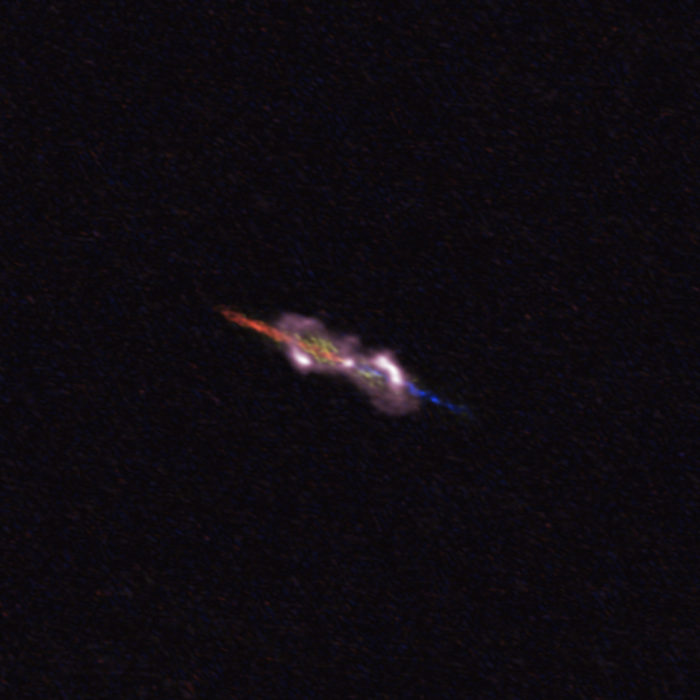
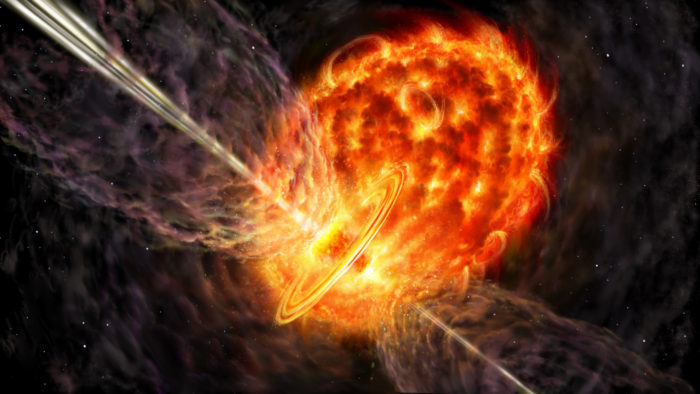
Contacts
-
Nicolás Lira
Education and Public Outreach CoordinatorJoint ALMA Observatory, Santiago - ChilePhone: +56 2 2467 6519Cel: +56 9 9445 7726Email: [email protected] -
Masaaki Hiramatsu
Education and Public Outreach Officer, NAOJ Chile -
Bárbara Ferreira
ESO Media Manager -
Amy C. Oliver
Public Information & News Manager
